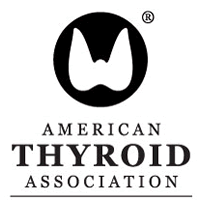
Rishi Kumar Sharma, Yash Mathur, Gaurav Chhabra, Atul Luhadia, Shanti Kumar Luhadia, Gaurav Dhandoria Indian Journal of Allergy, Asthma and Immunology 2018 32(2):47-53
Background: Bronchial asthma (BA) and allergic rhinitis (AR) are among the most common allergic disorders. Identification of specific causative allergens is of paramount importance for further management. Aims: This study aims (1) to find out the prevalence of various allergens leading to AR and/or BA through skin prick test (SPT), (2) to identify the trigger factors in these patients, (3) to study correlations of allergens and seasonal variations in patients suffering from AR and/or BA. Materials and Methods: A total of 134 patients were collected from outpatient department and inpatient department of Respiratory Medicine Department of Geetanjali Medical College and Hospital, Udaipur, from January 2016 to December 2017. The diagnosis of BA and AR was made according to the GINA and ARIA guidelines, respectively. SPT was done with 78 different types of aeroallergens, which included 23 types of pollens, 6 types of fungi, 10 types of insects, 6 types of dusts, 6 types of dander, 3 fabrics, 2 feathers, and 22 food allergens. Patients who had taken short-acting oral antihistaminics, beta-blockers, steroids, tricyclic antidepressants or any other drug that could affect the test within one week prior to testing were excluded. Also, patients on long-acting oral antihistaminics within four weeks of testing and pregnant women were excluded. Results: A total of 134 patients consisting of 73 (54.48%) males and 61 (45.52%) females, in the age group of 5–65 years, were included in the study. The maximum numbers of patients (50; 37.31%) were between the age group of 20 and 35 years. The maximum number of patients (94; 70.15%) had a duration of suffering from >1 years. AR was found in 60 (44.78%), BA associated with AR was found in 39 (29.1%), while BA alone was found in 35 (26.12%). In 54% of patients, triggers were found for exacerbation of their symptoms, the most common being air pollution (48%) followed by cold exposure (20%), physical activity (12%), irritants (9%), smoke (7%), and fumes and odors (4%). A total of 10,452 SPTs were done, out of which 265 (%) showed positive reactions. The positivity for pollens was seen in 116 (43.77%) patients followed by insects [79 (29.81%)], fungi [22 (8.3%)], house dust mite [15 (5.66%)], dusts [11 (4.15%)], fabrics [10 (3.77%)], danders [9 (3.4%)], and feathers [3 (1.13%)], respectively. Food allergens showed no significant reactions to SPT. Conclusions: Our study showed that insects were the most common allergen in BA patients, while pollens were the most common allergen in patients of AR with or without BA. Intermittent symptoms were common with pollen allergy.
from #Head and Neck by Sfakianakis via simeraentaxei on Inoreader https://ift.tt/2yoHKZp
